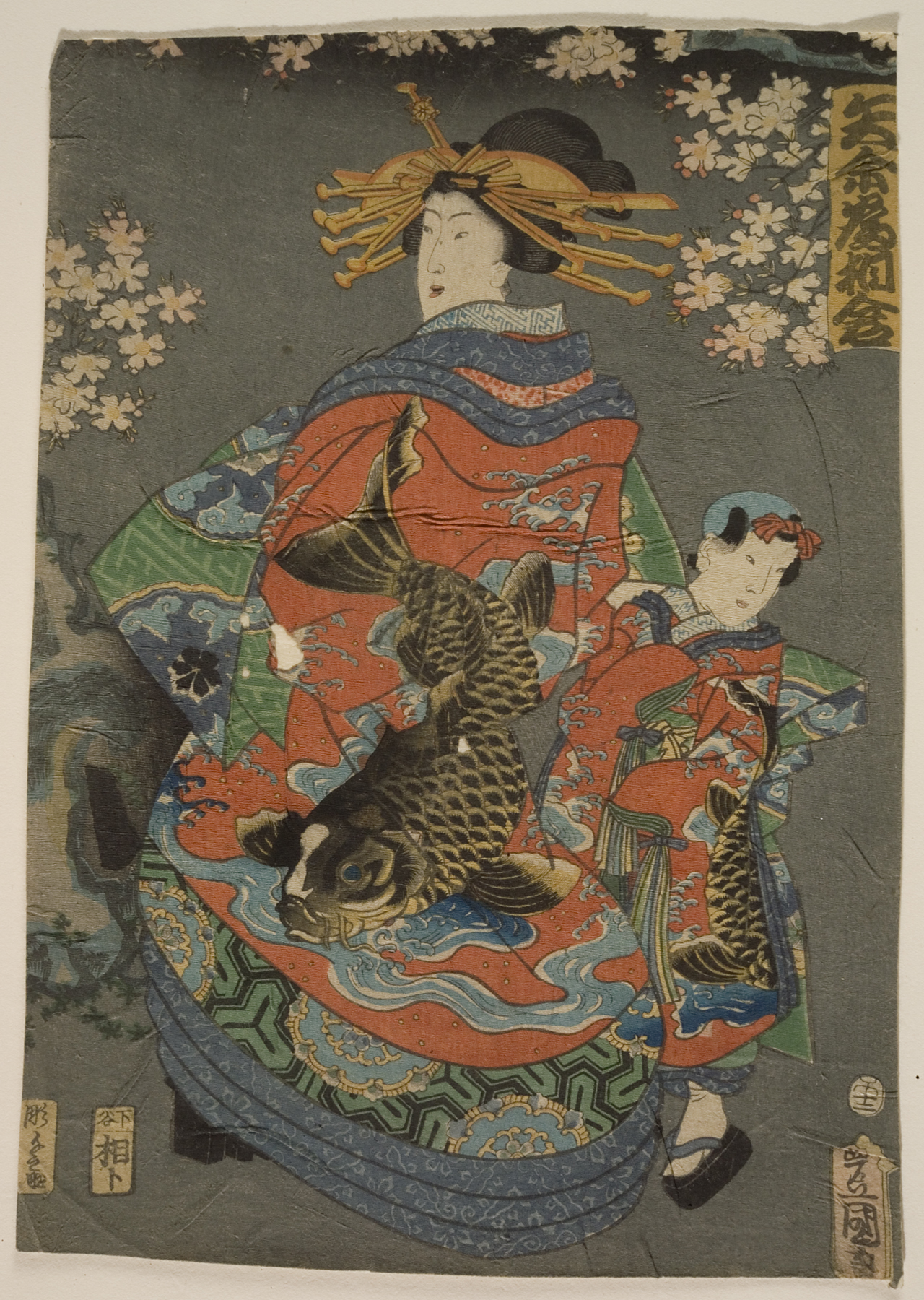(Courtesan and kamuro wearing kimono with giant carp), Utagawa Kunisada
Artwork Overview
Utagawa Kunisada, artist
1786–1864
(Courtesan and kamuro wearing kimono with giant carp),
1858, 12th month, Edo period (1600–1868)
Portfolio/Series title: Yayoisō no kimi (Courtesans Expressing the Mood of the 3rd Month)
Where object was made: Japan
Material/technique: color woodcut
Dimensions:
Image Dimensions Height/Width (Height x Width): 265 x 187 mm
Image Dimensions Height/Width (Height x Width): 10 7/16 x 7 3/8 in
Sheet/Paper Dimensions (Height x Width): 265 x 187 mm
Sheet/Paper Dimensions (Height x Width): 10 7/16 x 7 3/8 in
Mat Dimensions (Height x Width): 19 x 14 in
Image Dimensions Height/Width (Height x Width): 265 x 187 mm
Image Dimensions Height/Width (Height x Width): 10 7/16 x 7 3/8 in
Sheet/Paper Dimensions (Height x Width): 265 x 187 mm
Sheet/Paper Dimensions (Height x Width): 10 7/16 x 7 3/8 in
Mat Dimensions (Height x Width): 19 x 14 in
Credit line: William Bridges Thayer Memorial
Accession number: 1928.7571
Not on display
If you wish to reproduce this image, please submit an image request

